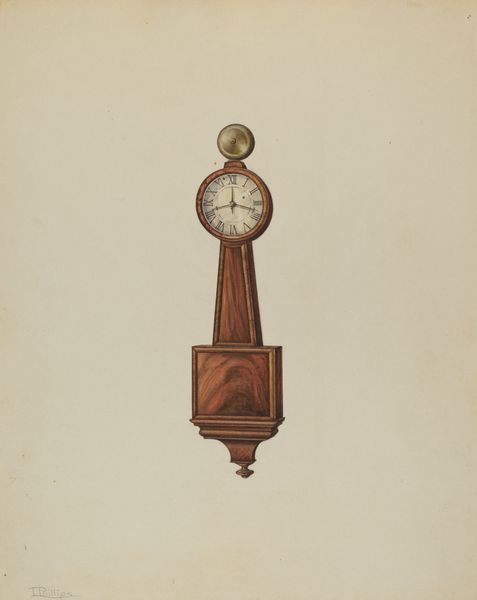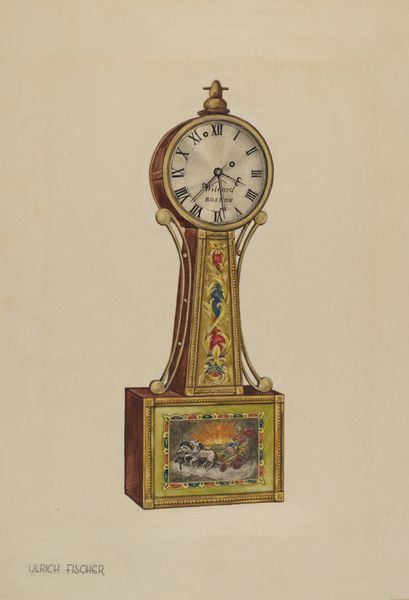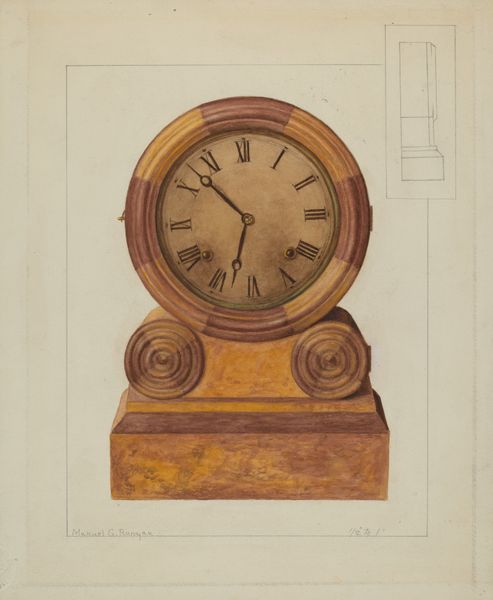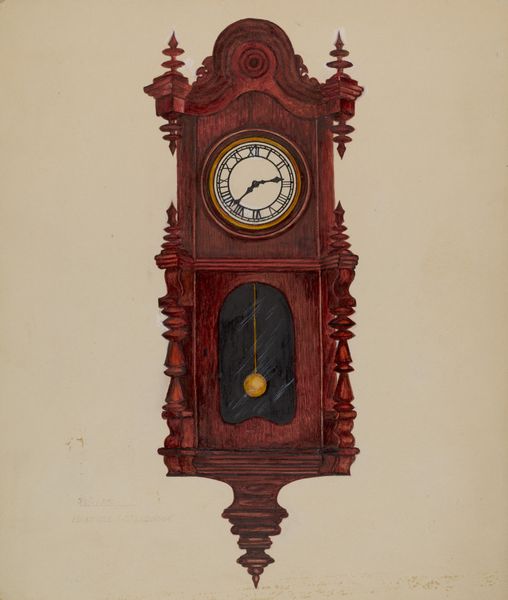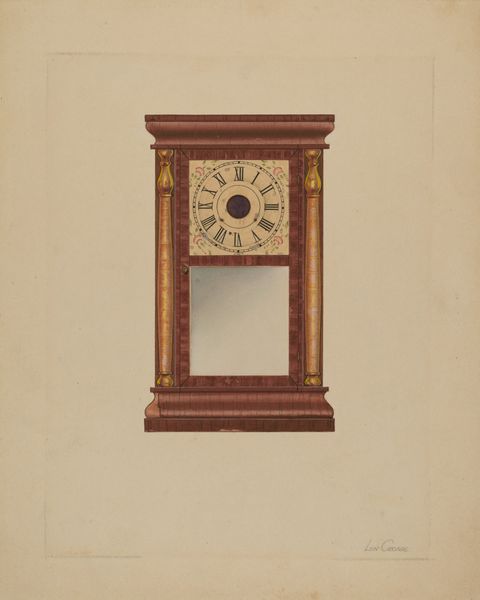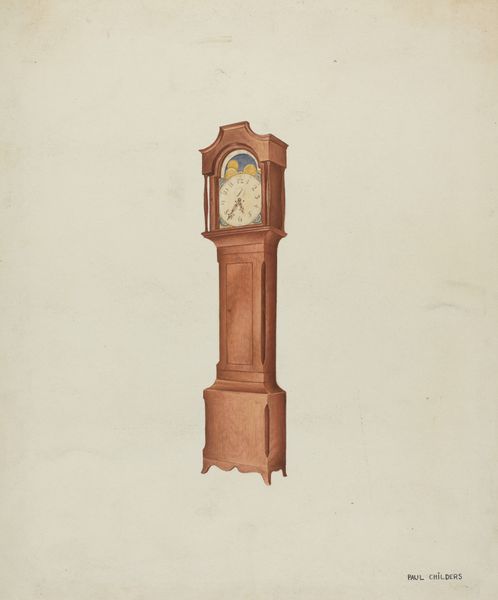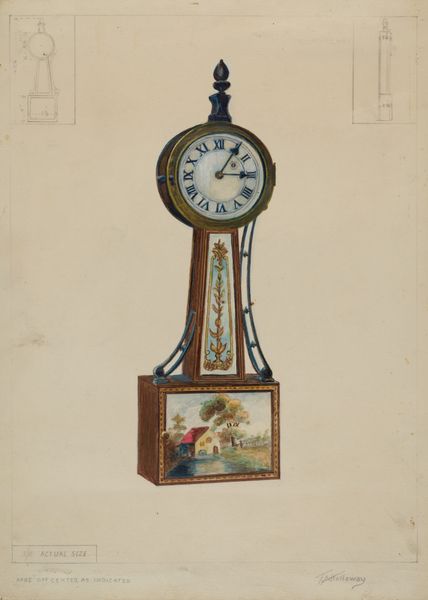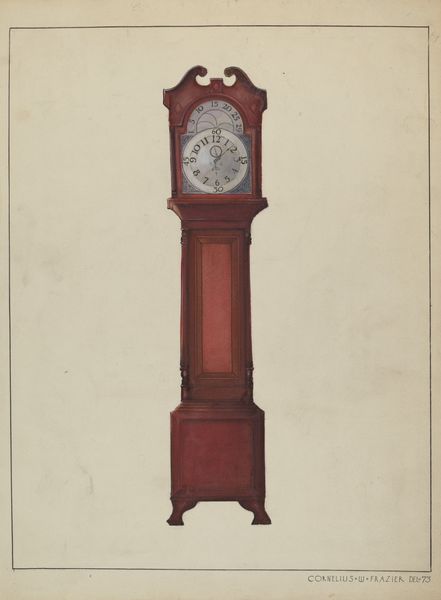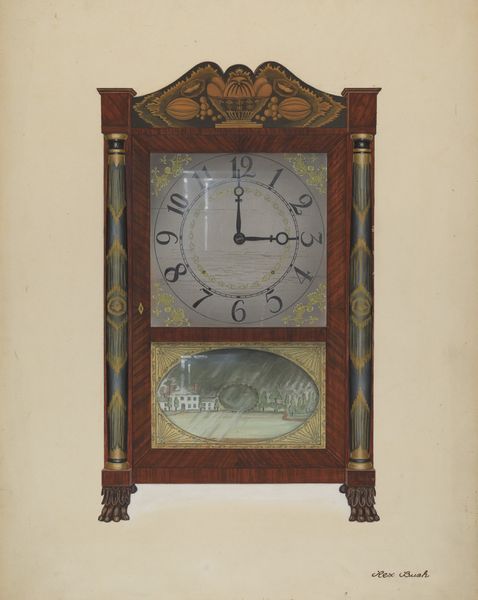
drawing, watercolor
#
drawing
#
watercolor
#
watercolour illustration
#
realism
Dimensions: overall: 35.8 x 24.5 cm (14 1/8 x 9 5/8 in.) Original IAD Object: none given
Copyright: National Gallery of Art: CC0 1.0
Editor: So, here we have "Banjo Clock," a watercolor and drawing from about 1942, by Ralph Morton. It's a charming image. The clock looks rather grand despite being rendered in a simple, almost folk-art style. What do you make of this, particularly considering it's not a 'real' clock, but a representation? Curator: For me, the choice of watercolor and drawing immediately pulls this piece into the realm of the handmade. Considering it's from 1942, in wartime, were there perhaps material constraints that made watercolor, rather than, say, oil paint or photography, the readily available or cheaper medium? Did the artist have fewer materials or different forms of labor at their disposal than during peace? Editor: That’s a really interesting point about resource scarcity during the war! I hadn’t considered that. Does that influence how you interpret the clock itself? Curator: Absolutely. Clocks are instruments used to measure the regulated division of labour into industrial cycles. This artwork asks us to think about those relationships through the act of re-creation and careful handmade processes like painting. Instead of serving an economic function of measuring and enforcing shifts in production, this watercolor drawing depicts this clock out of labor service. It no longer works as a regulator but as an image for possible sale or display. It’s a fascinating tension. What do you think about this transition between work-object and displayed decoration? Editor: I hadn't thought about the contrast so directly, but you're right, it does pose a lot of questions about labour and production. Maybe the artist found solace in depicting everyday objects, taking control through artistic interpretation? Curator: Exactly. By recreating it, Morton appropriates its symbolism. He takes an object rooted in the machinery of the market and renders it as a quaint display. He renders that productive force beautiful by his very handmade processes. Editor: It’s made me see this seemingly simple image as something far more complex. The tension between art and industry and material circumstances has changed my perspective quite radically. Curator: Mine too. Considering the wartime context and this artist’s labor conditions truly makes this an enduring picture.
Comments
No comments
Be the first to comment and join the conversation on the ultimate creative platform.
